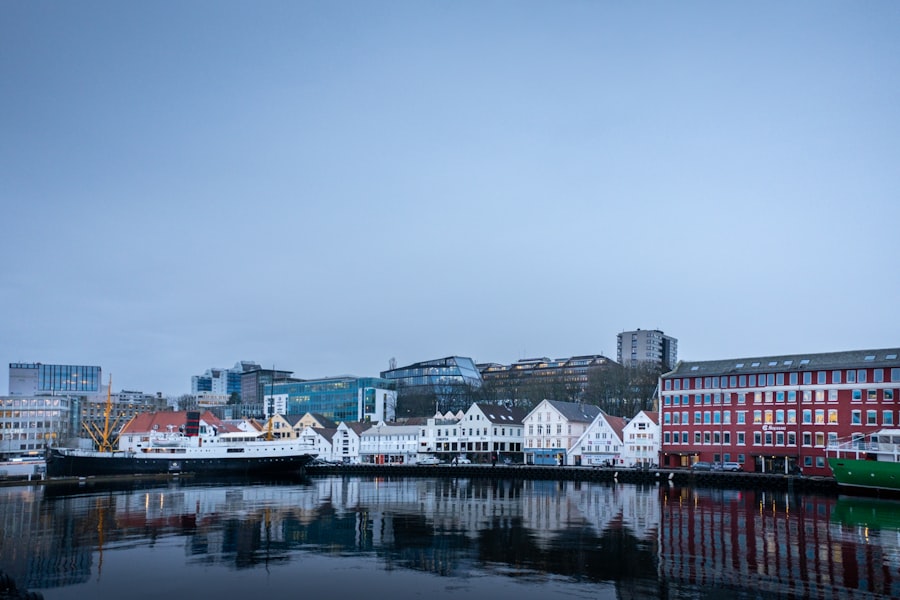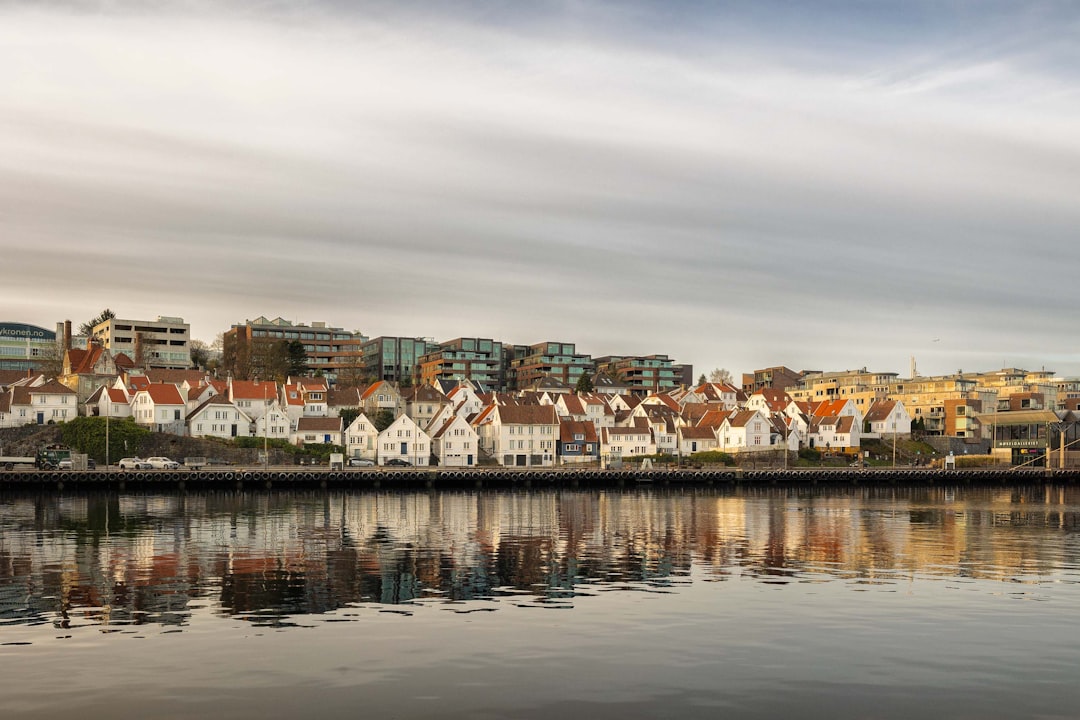In Norway, property ownership is primarily categorised into two distinct types: Eier and Andel. Understanding these concepts is crucial for anyone looking to invest in Norwegian real estate. Eier ownership, or freehold ownership, grants the owner complete control over the property, including the land it sits on.
This type of ownership is akin to what many might be familiar with in other countries, where the owner has the right to modify, sell, or lease the property without needing to consult others. On the other hand, Andel ownership, or share ownership, is a unique arrangement where individuals own a share in a housing cooperative. This means that while they do not own the property outright, they have the right to occupy a specific unit within the cooperative.
The distinction between these two forms of ownership is not merely academic; it has practical implications for how individuals interact with their properties and the responsibilities they bear. For instance, an Eier owner has the autonomy to make decisions regarding renovations or alterations without needing approval from a board or committee. Conversely, Andel owners must navigate the rules and regulations set forth by their housing cooperative, which can sometimes limit their ability to make changes to their living space.
Understanding these foundational differences is essential for prospective buyers as they consider their options in the Norwegian property market. Plan your relocation with confidence. Book a personal meeting with the Norway Relocation Group today. https://norwayrelocation.no/one-hour-strategy-session/
Summary
- Eier ownership refers to full ownership of a property, while Andel ownership involves owning a share of a property or building.
- The legal framework for Eier and Andel ownership in Norway is governed by specific laws and regulations to protect the rights of property owners.
- Eier ownership gives property owners full control and decision-making power over their property, while Andel ownership offers shared responsibility and decision-making among multiple owners.
- Andel ownership comes with unique benefits such as shared maintenance costs and access to communal facilities, making it an attractive option for some property buyers.
- Eier and Andel owners have different rights and responsibilities, including financial obligations and decision-making authority, which should be carefully considered before choosing a property ownership type.
The Legal Framework for Eier and Andel Ownership in Norway
The legal framework governing Eier and Andel ownership in Norway is well-defined and structured to protect the rights of property owners. For Eier ownership, the primary legislation is the Property Act (Eiendomsrettsloven), which outlines the rights and obligations of freehold owners. This act provides clarity on issues such as property transfer, inheritance, and the responsibilities of owners towards their properties and neighbours.
It ensures that owners have a clear understanding of their rights, including the ability to sell or lease their property as they see fit. In contrast, Andel ownership operates under a different set of regulations. The Housing Cooperative Act (Borettslagsloven) governs these arrangements, establishing the framework for how cooperatives are formed and managed.
This legislation outlines the rights of Andel owners, including their voting rights within the cooperative and their obligations to contribute to communal expenses. The cooperative model fosters a sense of community among residents but also requires adherence to collective decisions that may not always align with individual preferences. Understanding these legal frameworks is vital for anyone considering either form of ownership in Norway.
Eier Ownership: What It Means for Property Owners

Eier ownership offers a range of benefits that appeal to many prospective property buyers in Norway. One of the most significant advantages is the level of control it affords owners. With Eier ownership, individuals can make decisions about their property without needing approval from others.
This autonomy extends to renovations, landscaping, and even selling the property when they choose. For those who value independence and wish to personalise their living space, Eier ownership is often seen as the more attractive option. Moreover, Eier owners typically enjoy greater financial security compared to Andel owners.
Since they own both the property and the land it occupies, they can benefit from any increase in property value over time. This potential for capital appreciation can be particularly appealing in a growing market like Norway’s. Additionally, Eier owners are not subject to the same communal fees that Andel owners must pay, which can lead to lower ongoing costs in the long run.
However, it is essential for potential buyers to consider not only the benefits but also the responsibilities that come with Eier ownership, such as maintenance and property taxes.
Andel Ownership: The Unique Features and Benefits
Andel ownership presents a different set of features and benefits that can be particularly appealing to certain demographics. One of the most notable advantages is affordability. Because Andel ownership typically involves purchasing a share in a cooperative rather than an entire property, it often requires a lower initial investment.
This makes it an attractive option for first-time buyers or those looking to enter the housing market without committing to a significant financial outlay. Additionally, Andel ownership fosters a sense of community among residents. Living in a cooperative often means sharing common spaces and facilities, which can lead to stronger social ties and support networks among neighbours.
This communal living arrangement can be particularly beneficial for families or individuals who value social interaction and collaboration. Furthermore, many housing cooperatives offer shared amenities such as gardens, laundry facilities, and recreational areas, enhancing the overall living experience for Andel owners.
Key Differences in Rights and Responsibilities between Eier and Andel Owners
The rights and responsibilities associated with Eier and Andel ownership differ significantly, impacting how individuals engage with their properties. Eier owners enjoy full autonomy over their properties, allowing them to make decisions regarding renovations, maintenance, and usage without needing approval from others. They are responsible for all aspects of property management, including upkeep and compliance with local regulations.
In contrast, Andel owners must adhere to the rules established by their housing cooperative. This includes obtaining permission for renovations or alterations and participating in communal decision-making processes. While this structure can foster a sense of community and shared responsibility, it may also limit individual freedom in managing one’s living space.
Additionally, Andel owners are typically required to pay monthly fees that cover communal expenses such as maintenance and utilities, which can add an ongoing financial obligation that Eier owners do not face.
When considering the financial implications of Eier versus Andel ownership, several factors come into play that can influence an individual’s decision-making process. Eier ownership generally involves higher upfront costs due to the need to purchase both the property and land outright. However, this investment can yield significant returns over time as property values appreciate.
Additionally, Eier owners are not subject to monthly fees associated with communal living arrangements, which can lead to lower long-term costs. On the other hand, Andel ownership often requires a lower initial investment but comes with ongoing monthly fees that cover shared expenses within the cooperative. While this arrangement can make homeownership more accessible for some individuals, it is essential to consider how these fees may impact overall financial stability in the long run.
Furthermore, Andel owners may not experience the same level of capital appreciation as Eier owners since they do not own the property outright. Therefore, potential buyers must weigh these financial implications carefully when deciding between Eier and Andel ownership.
The Role of Eier and Andel Ownership in Norwegian Real Estate Market

Eier and Andel ownership play crucial roles in shaping Norway’s real estate market. The prevalence of Eier ownership reflects a strong cultural emphasis on individualism and personal autonomy in property management. Many Norwegians aspire to own their homes outright, viewing it as a symbol of success and stability.
This demand for freehold properties has led to increased competition in certain areas, driving up prices and making it more challenging for first-time buyers to enter the market. Conversely, Andel ownership has emerged as a viable alternative for those seeking affordable housing options in urban centres where property prices are particularly high. The cooperative model allows individuals to pool resources and share costs while still enjoying homeownership benefits.
As cities continue to grow and housing demand increases, Andel ownership may become an increasingly popular choice for those looking for community-oriented living arrangements without breaking the bank.
Common Misconceptions about Eier and Andel Ownership
Despite their distinct characteristics, there are several misconceptions surrounding Eier and Andel ownership that can lead to confusion among prospective buyers. One common myth is that Eier ownership is always superior to Andel ownership due to its perceived autonomy and control. While it is true that Eier owners have more freedom regarding their properties, this does not necessarily mean that Andel ownership lacks value or benefits.
Many individuals appreciate the sense of community and shared responsibility that comes with living in a cooperative. Another misconception is that Andel ownership is only suitable for low-income individuals or those unable to afford traditional homeownership. In reality, many people from various socioeconomic backgrounds choose Andel ownership for its affordability and communal living benefits.
It is essential for potential buyers to approach both options with an open mind and consider their unique circumstances before making a decision.
How to Choose between Eier and Andel Ownership for Your Property
Choosing between Eier and Andel ownership requires careful consideration of various factors that align with an individual’s lifestyle preferences and financial situation. Prospective buyers should begin by assessing their long-term goals regarding homeownership. If personal autonomy and control over property decisions are paramount, Eier ownership may be more suitable.
However, if affordability and community engagement are priorities, Andel ownership could be an attractive option. Additionally, potential buyers should evaluate their financial capacity to manage ongoing costs associated with each type of ownership. While Eier ownership may involve higher upfront costs but lower ongoing expenses, Andel ownership typically requires lower initial investments but comes with monthly fees that can add up over time.
Ultimately, conducting thorough research and seeking professional advice can help individuals make informed decisions that best suit their needs.
Legal Protections for Eier and Andel Owners in Norway
Norway’s legal framework provides robust protections for both Eier and Andel owners, ensuring that their rights are safeguarded throughout their ownership experience. For Eier owners, the Property Act outlines clear guidelines regarding property rights, transfer processes, and dispute resolution mechanisms. This legal structure helps protect owners from potential infringements on their rights by neighbours or local authorities.
Similarly, Andel owners benefit from protections established under the Housing Cooperative Act. This legislation ensures that cooperatives operate fairly and transparently while safeguarding individual rights within the cooperative structure. For instance, it mandates that all members have equal voting rights on important decisions affecting communal living arrangements.
These legal protections contribute to a stable environment for both types of property owners in Norway.
The Future of Eier and Andel Ownership in Norwegian Property Market
As Norway’s real estate market continues to evolve in response to changing demographics and economic conditions, both Eier and Andel ownership will likely adapt to meet emerging needs. With increasing urbanisation leading to higher demand for affordable housing options, Andel ownership may see significant growth as more individuals seek community-oriented living arrangements without incurring substantial financial burdens. At the same time, Eier ownership will remain appealing for those prioritising personal autonomy and investment potential in an appreciating market.
As new developments arise and housing policies shift, prospective buyers will need to stay informed about trends affecting both types of ownership in order to make sound investment decisions. For those considering relocation or investment in Norway’s real estate market, engaging with organisations like the Norway Relocation Group can provide invaluable support throughout the process. Their expertise can help navigate complex legal frameworks while ensuring a smooth transition into Norwegian life.
Furthermore, language proficiency plays a crucial role in successfully integrating into Norwegian society; thus enrolling in Norwegian courses at institutions like NLS Norwegian Language School in Oslo can significantly enhance communication skills and cultural understanding—essential tools for thriving in this beautiful country.
Register for a Norwegian class at the NLS Norwegian Language School now!

